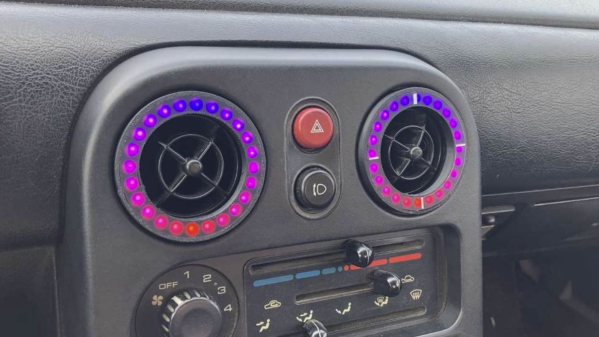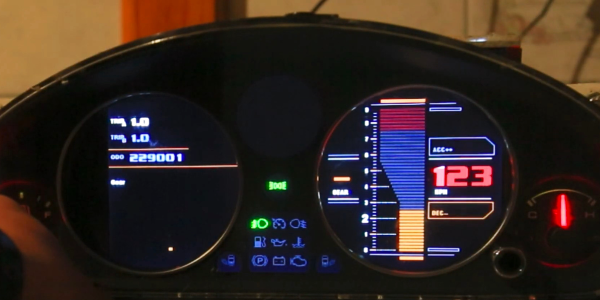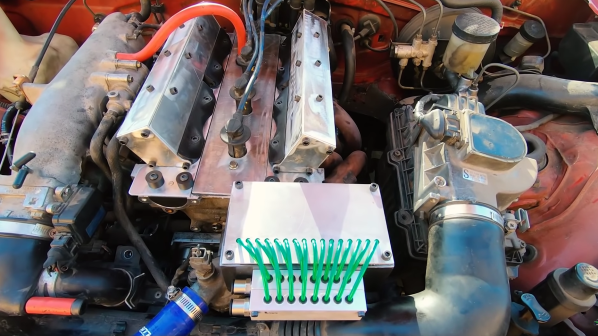Anyone in the JDM scene can tell you, round air vents are prime real estate for round analog gauges. If you want a gauge but don’t want to block your vent, you could consider building these LED vent gauges from [ktanner] instead.

The design is simple. It relies on 3D printing a replacement bezel for the Mazda Miata’s stock round air vents. This bezel is designed to hold a NeoPixel ring from Adafruit. When built with the optional laser-cut diffuser, the parts have a near-stock look when the LEDs are turned off. It’s a classy, stealthy mod – exactly the sort of thing Miata owners need but never seem to have! (Author Note: don’t be mad, I was once one of you!)
With 24 addressable RGB LEDs, it’s possible to display all kinds of data by turning the LEDs on and off and varying the colors. For example, you could readily build a boost gauge that turns on more LEDs at higher boost pressure. It could then be set up to flash red in the event that you surpass safe thresholds. [ktanner] hasn’t specified any particular microcontroller for the setup — but just about any part you like can be used to drive NeoPixels, after all.
If you’re new to NeoPixels, you might find a simulator useful for developing your projects. Meanwhile, if you’re doing similar work on other cars, be sure to hit us up on the tipsline!















